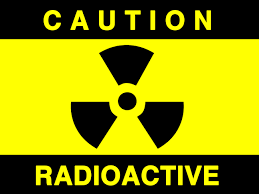NORM Radiation
There are three basic types of ionizing radiation that may be emitted by NORM:
- Alpha radiation is made up of heavy, charged particles that cannot penetrate very far, even in air. They can be stopped by a piece of paper.
- Beta radiation consists of lighter charged particles than alpha particles, that travel faster and are more penetrating than alpha radiation. Beta radiation can be stopped by a few centimetres of plywood.
- Gamma radiation consists of high-energy rays, and is very penetrating. The thicker and denser the barrier, the more the radiation intensity is reduced. One metre of concrete or several centimetres of steel will produce significant reduction.
Health Effects
- Exposure to ionizing radiation (such as alpha, beta and gamma radiations) can cause tissue destruction and increase the risk of developing cancer. These effects increase directly with accumulated exposure.
- Gamma radiation is primarily a concern as external radiation (i.e. where the source of the radiation is outside the body).
- Alpha and beta radiation are mainly hazardous as internal radiation sources (i.e. when NORM gets inside the body by breathing in dust or gas, by accidental swallowing of contaminated food, or through cuts in the skin).
General Precautions for Minimizing Exposure
- Minimize time spent in area.
- Keep as far away from the NORM-contaminated material/equipment as possible. Keep NORM material at arm’s length from the body, wherever possible.
- Minimize dust generation – don’t grind, chip or sand scale.
- Ventilate tanks and other equipment to allow radon gas to dissipate.
- Minimize contamination of clothing.
- Cover all cuts and abrasions on skin.
- Do not eat, drink or smoke in a potentially contaminated work area. Wash before doing so.
Personal Protective Equipment
Use the following PPE for handling NORM contaminated sludge, sample collection, or other operations where dust inhalation can occur:
- impervious gloves (e.g. Viton, nitrile, neoprene),
- fire retardant disposable coveralls,
- rubber or neoprene boots (or disposable boot covers if area is dry),
- safety glasses/goggles,
- half-facepiece OV/P100 respirator, or a full-facepiece OV/P100 respirator for handling radioactive contaminated sludge (>2000 cpm).
Units
Sv = Sievert (m-milli, µ-micro, n-nano)
Sv/hr = Sievert per hour
cpm = counts per minute
Bq = Becquerel
Gamma Radiation
Canadian NORM Guidelines: Radiation Dose Limits for External Radiation
| Type of Limit | Annual Dose |
Equivalent Hourly Dose (Based on 2000-hour work year) |
| Annual Dose Limit |
1 mSv 1000 µSv 1 000 000 nSv |
0.5 µSv/hr 500 nSv/hr |
| Action Level Where doses to workers or members of the public may exceed this value, perform a site-specific risk assessment. |
0.3 mSv 300 µSv 300 000 nSv |
0.15 µSv/hr 150 nSv/hr |
Annual Allowable Hours
| Dose Rate | Annual Allowable Hours (hr) | ||
| µSv/hr | nsv/hr | Recommended* | Maximum |
| 0.5 | 500 | 600 | 2000 |
| 1 | 1000 | 300 | 1000 |
| 2 | 2000 | 150 | 500 |
| 3 | 3000 | 100 | 333 |
| 4 | 4000 | 75 | 250 |
| 5 | 5000 | 60 | 200 |
| 6 | 6000 | 50 | 167 |
| 7 | 7000 | 43 | 143 |
| 8 | 8000 | 38 | 125 |
*Results in total dose of 300 000 nSv, providing a protection factor for other possible exposures during the year.
Alpha/Beta Radiation
Exposure limits for internal radiation are called Annual Limits on Intake (ALIs). Units are Bq/year, and are different for different radionuclides. Measuring a worker’s exposure to NORM dust and analysis for radionuclides can be used to compare to ALIs. Where this is not feasible, surface measurements of sludge and scale using a pancake probe can give an indication of alpha/beta radiation levels. Subsequent laboratory analysis of a bulk sample gives more detailed information on the radionuclide content. The table below indicates NORM classification levels compared to surface measurements and laboratory results.
| Laboratory Measurement | Approximate Surface Measurement | Classification |
| 0.3 – 10 Bq/gram | <2x background | Unrestricted |
| 10 – 70 Bq/gram | 2x background -2000 cpm | NORM-Contaminated |
| >70 Bq/gram | >2000 cpm | Radioactive |
Unrestricted: Considered to be of no significance in terms of radioactivity and potential effects on the ecosystem. Dispose of as ordinary oilfield waste, no additional precautions for worker protection.
NORM Contaminated: Requires laboratory analysis to determine disposal needs. Workers coming in contact with NORM material must wear appropriate PPE and wash hands at breaks. Tools and PPE must be decontaminated down to less than 2x background, or disposed of as NORM waste.
Radioactive: Requires laboratory analysis of sludge or scale to determine disposal needs. Subject to special handling, storage, transport and disposal requirements.
Have questions about NORM, or general concerns about contaminants in your workplace? Feel free to contact us via email at inquiry@cihc.info or call us at 403-543-3378.

